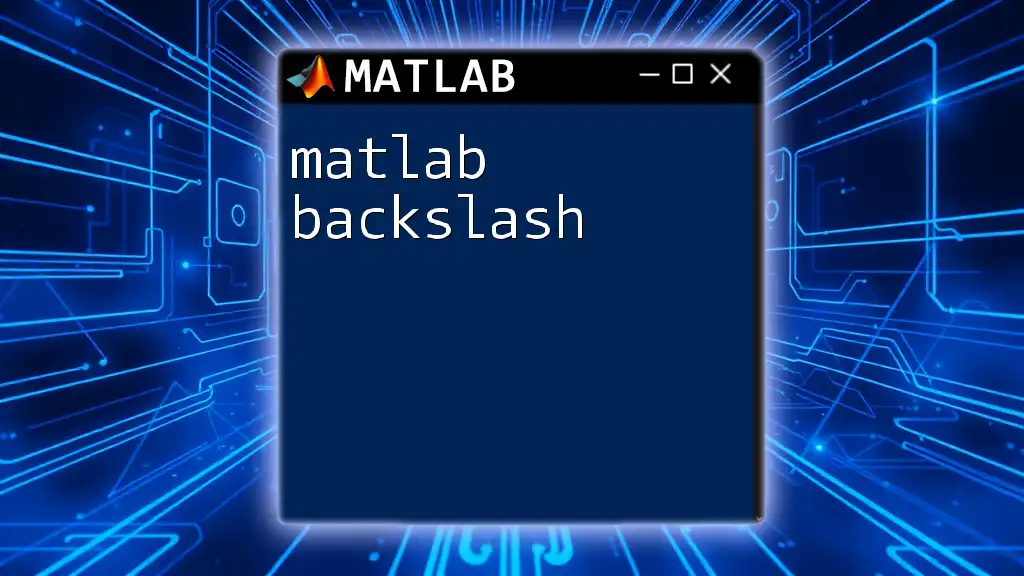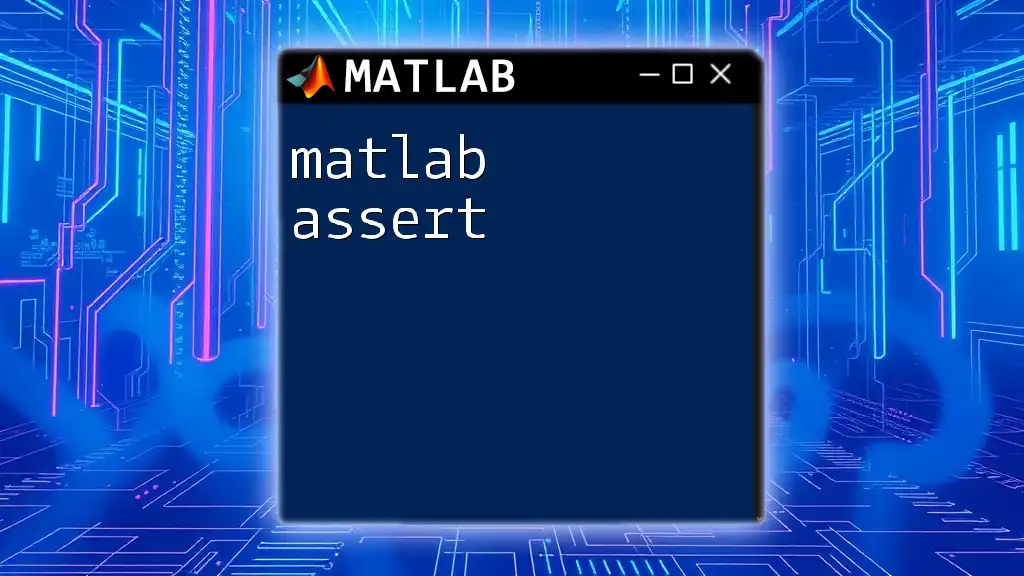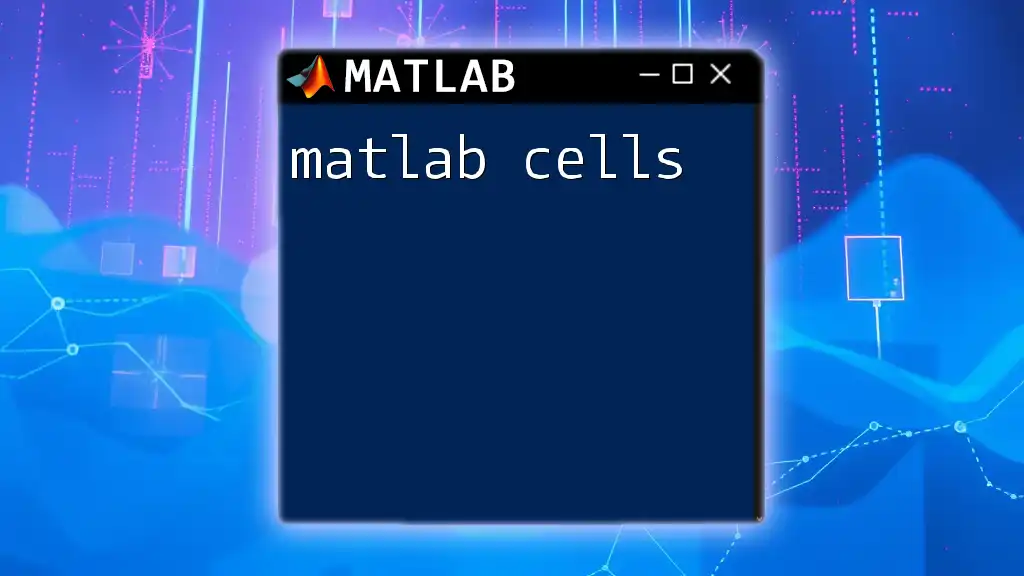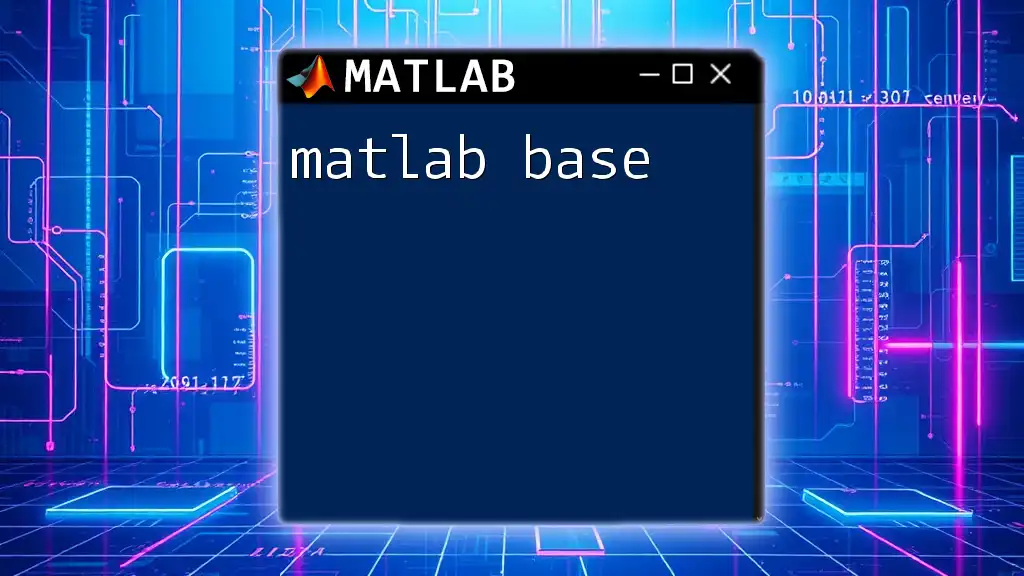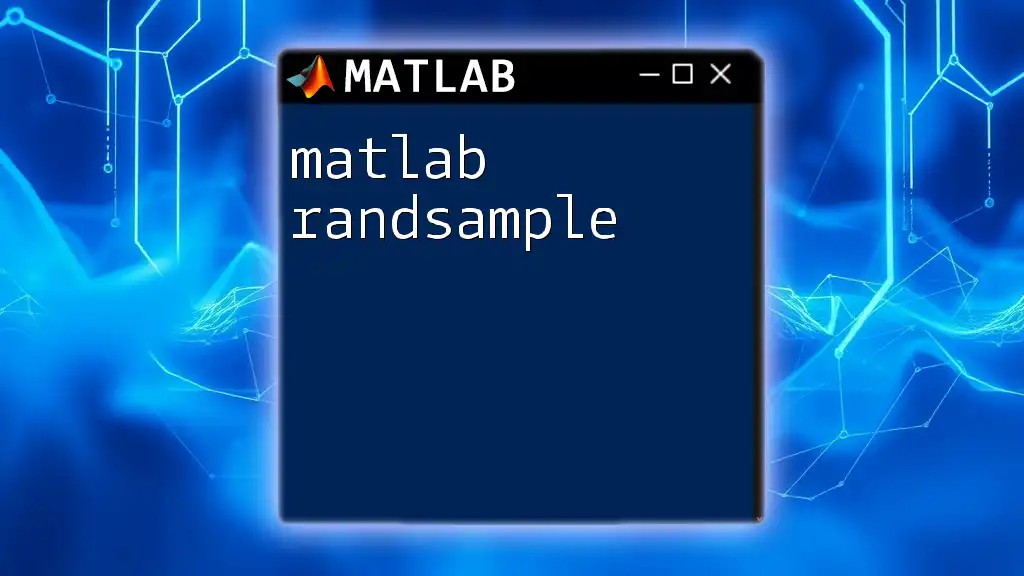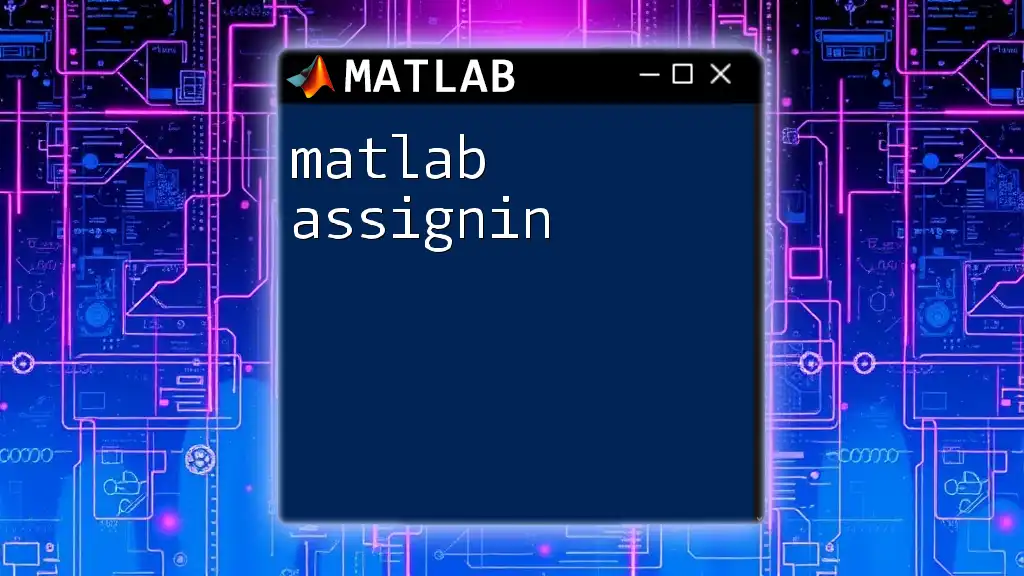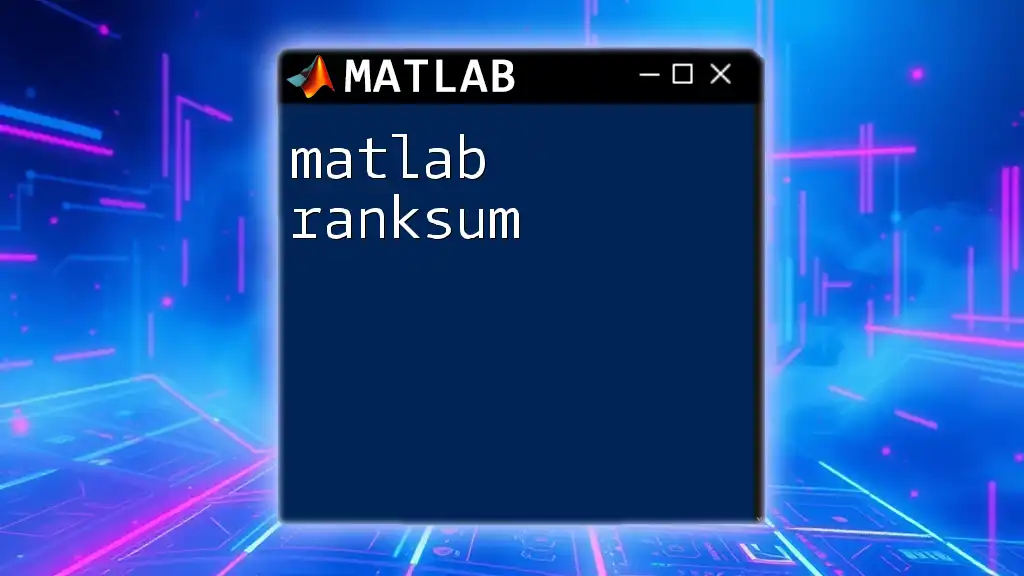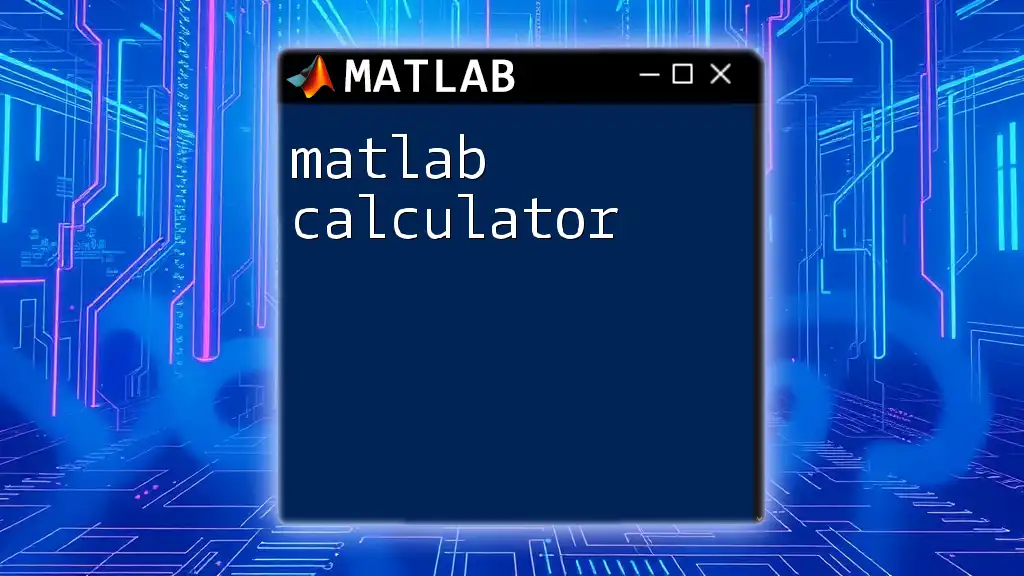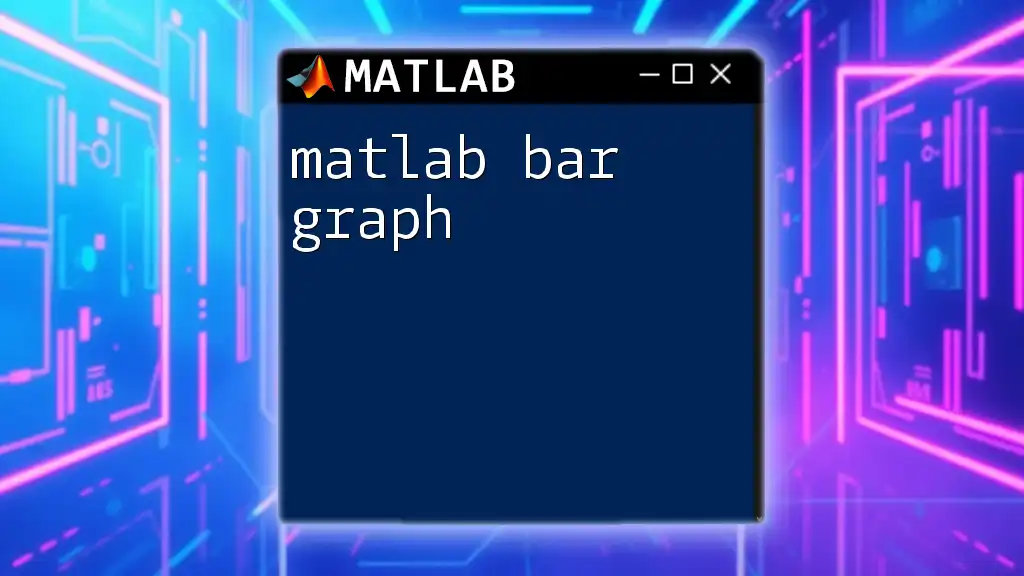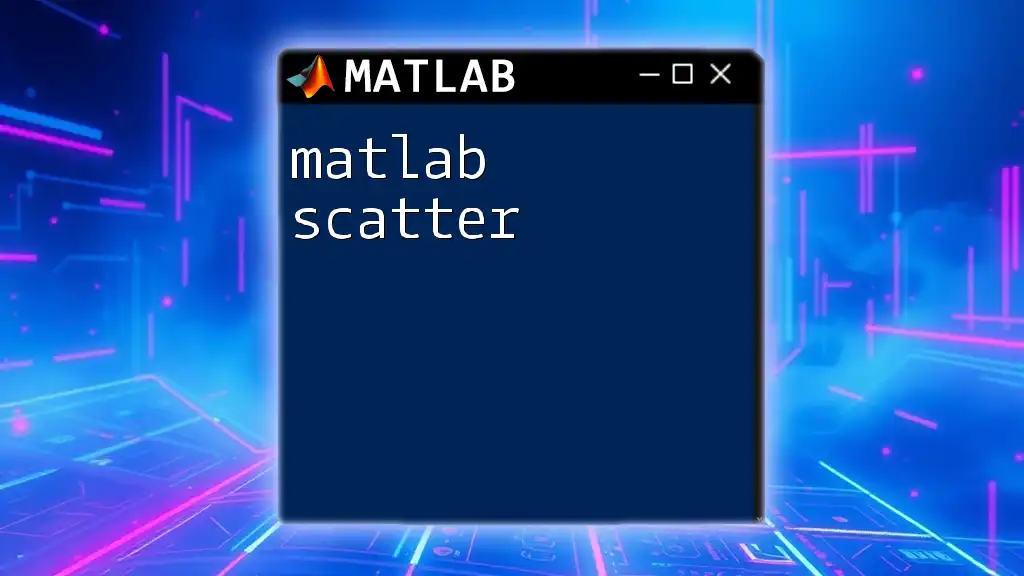The MATLAB backslash operator (`\`) is used to solve linear equations of the form Ax = b, where A is a matrix and b is a vector.
x = A \ b;
The Basics of the Backslash Operator
Definition and Syntax
The MATLAB backslash operator is a key tool when working with matrices and solving linear equations. Its general syntax is:
X = A \ B
In this case, `A` is a matrix and `B` can either be a vector or another matrix. The backslash operator performs a calculation for the variable `X`, which effectively solves for the unknowns in a system of equations defined by `A` and `B`.
What Does the Backslash Do?
The backslash operator serves primarily two purposes in MATLAB: matrix division and solving linear equations.
- Matrix Division: The operator effectively divides matrix `B` by the matrix `A` from the left. This operation is equivalent to finding a matrix `X` such that the product `AX = B`.
- Solving Linear Equations: Often employed for systems of equations, the backslash operator provides a computationally efficient way to find solutions. When `A` is square and non-singular, `X` is direct. When `A` is rectangular or singular, MATLAB applies methods like Least Squares to compute a solution.
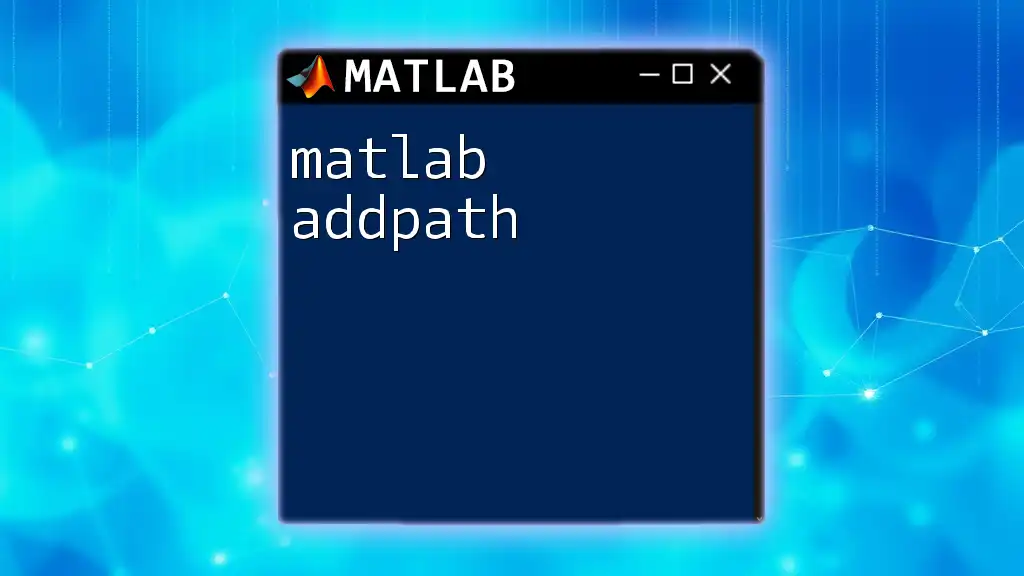
Key Features of the Backslash Operator
Efficient Computation
Using the backslash operator can significantly optimize calculations compared to traditional approaches. When comparing it to explicit matrix inversion via syntax like `X = inv(A) * B`, it is critical to recognize several key differences:
- Speed: The backslash operator has built-in optimizations that speed up computations compared to calculating the inverse first.
- Numerical Stability: The backslash operator is often more stable in terms of numerical computations, especially when dealing with ill-conditioned matrices. It minimizes the risk of errors associated with floating-point arithmetic that can arise from matrix inversion.
Types of Matrices
Understanding the type of matrices you are dealing with is crucial when using the backslash operator:
-
Square Matrices: If `A` is a square matrix (same number of rows and columns), the backslash operator will typically provide a unique solution.
-
Rectangular Matrices: For non-square matrices, if the number of equations exceeds the number of unknowns (overdetermined) or vice versa (underdetermined), MATLAB will compute either a least squares solution or a solution with arbitrary values, respectively.
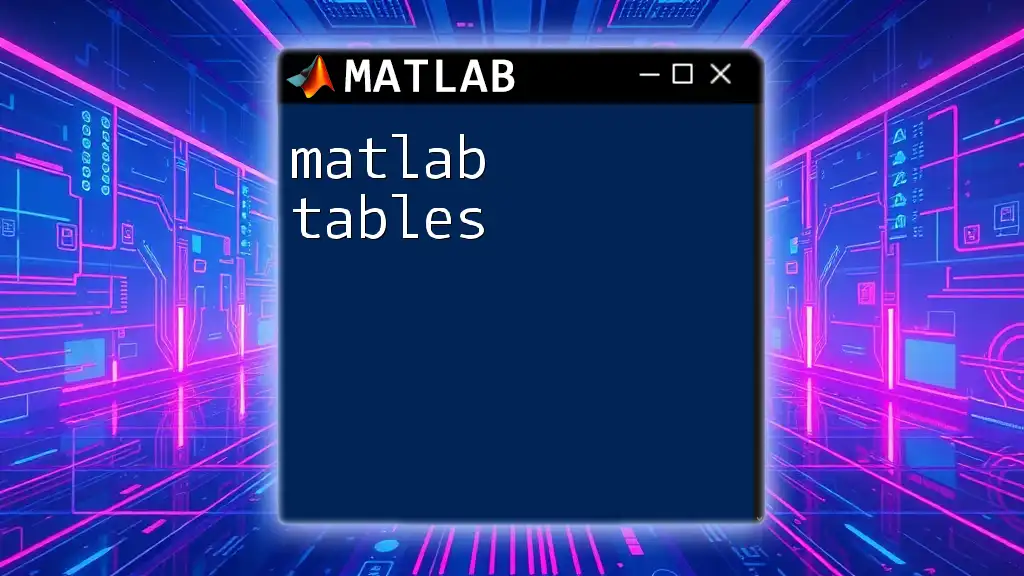
Practical Applications of the Backslash Operator
Example 1: Solving a Simple Linear System
To illustrate the backslash operator, consider this system of equations:
- \( 2x + 3y = 5 \)
- \( x - y = 1 \)
Here's how you would implement this in MATLAB:
A = [2 3; 1 -1];
B = [5; 1];
x = A \ B;
Expected Output: The output `x` will return a vector containing the values of `x` and `y` that satisfy this system of equations. You can interpret the result to understand the solution of the equations visually and numerically.
Example 2: Overdetermined and Underdetermined Systems
When faced with overdetermined systems (more equations than unknowns), the backslash operator implements the Least Squares method to provide the best-fit solution.
For instance, consider this overdetermined system:
A = [1 2; 2 4; 3 6];
B = [3; 6; 9];
x = A \ B; % Least Squares Solution
Output: The result `x` will yield the best-fit coefficients that minimize the error in the system. This method works well because, often in real-world applications, data can be noisy or abundant, making least squares a powerful approach.
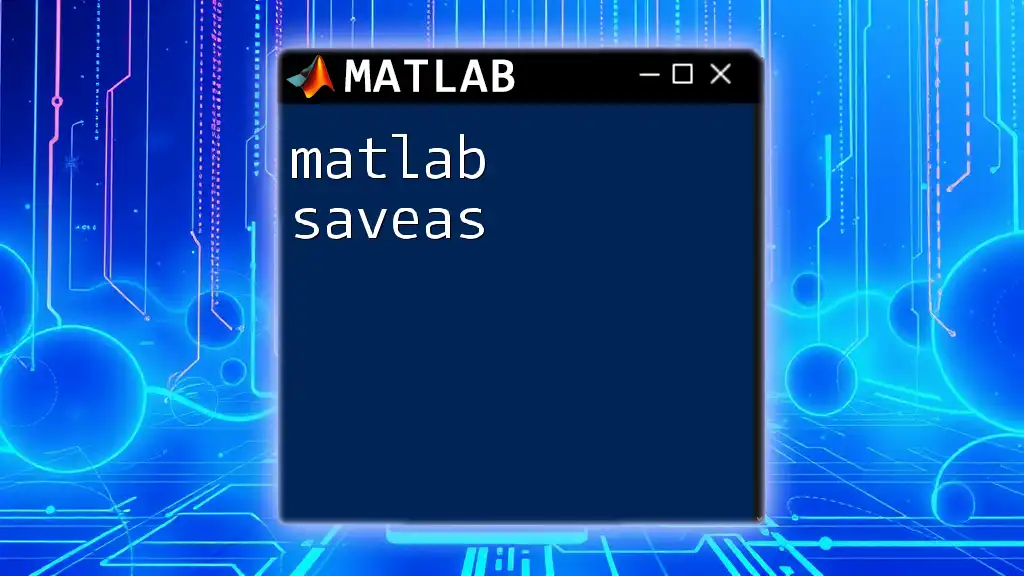
Advanced Applications
Backslash in Data Fitting
Another practical application of the MATLAB backslash operator lies in curve fitting. For fitting a polynomial curve to discrete data points, you can set up a system of equations that represent the polynomial and solve for the coefficients using the backslash operator.
Using Backslash in Control Systems
In computational control systems, the backslash operator is frequently used in modeling and simulating state-space representations, enhancing understanding of dynamic systems and their behaviors based on defined states and input-output relations.
Error Handling
When using the backslash operator, you may run into various common errors. Understanding how to resolve these is crucial:
- Common Pitfalls: Mismatched dimensions between matrices can lead to errors. Make sure that the number of rows in `A` equals the number of entries in `B`.
- Singular Matrices: If matrix `A` is singular (det(A) = 0), the backslash operator will return a warning and may provide a solution that minimizes residuals instead.
Having a plan for handling errors in MATLAB will streamline your workflow and enhance problem-solving capabilities.
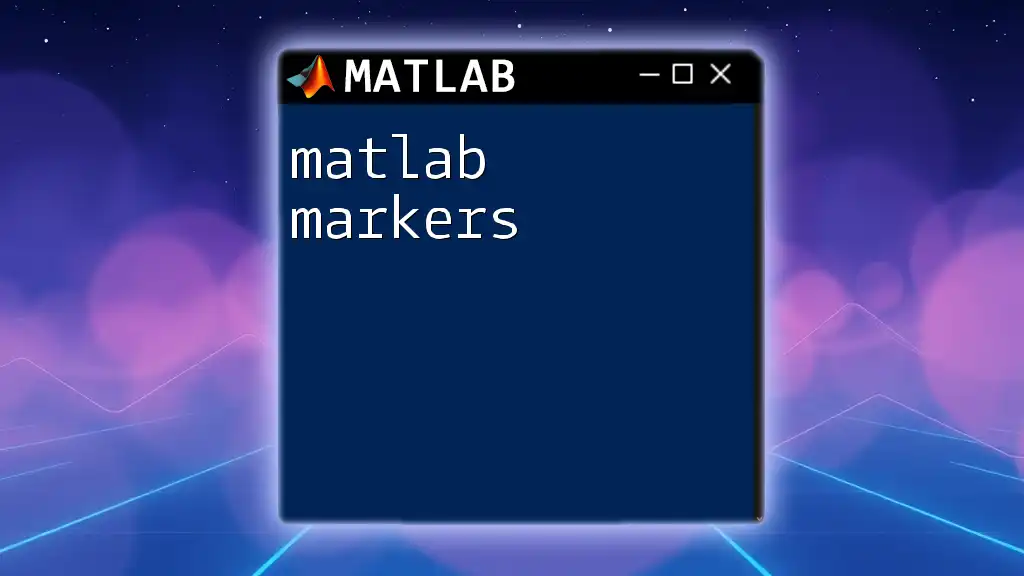
Conclusion
In summary, the MATLAB backslash operator is an indispensable tool in any programmer's arsenal, simplifying the process of solving complex linear equations while ensuring both speed and numerical stability. By practicing and integrating this operator into your workflow, you can elevate your MATLAB skills and efficiency in matrix manipulations.
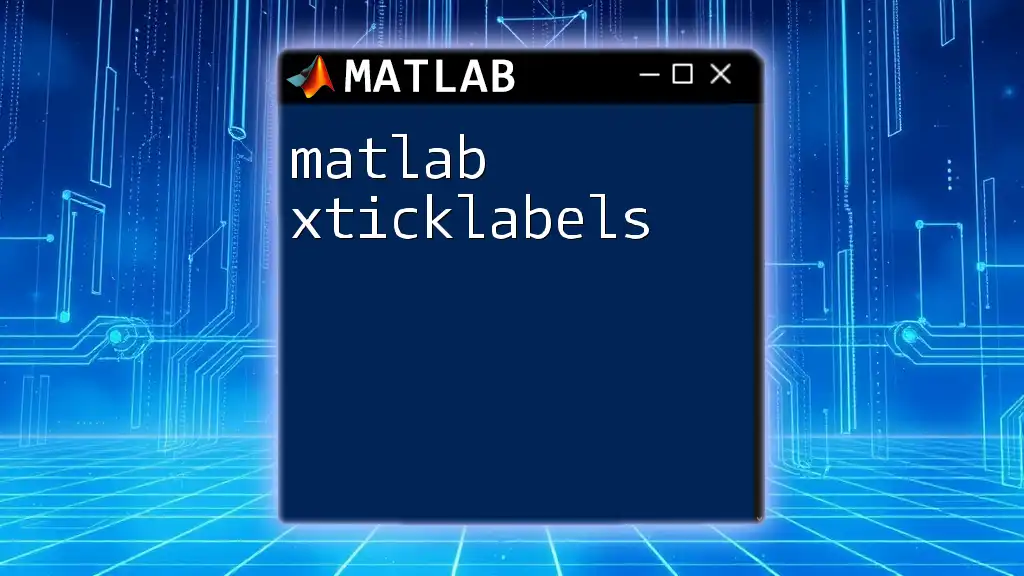
Additional Resources
For further exploration, consider reviewing resources such as the official MATLAB documentation, participating in online forums, or enrolling in specialized courses that focus on MATLAB matrix manipulations. Each of these resources can deepen your understanding and enhance your proficiency with MATLAB, particularly the backslash operator.
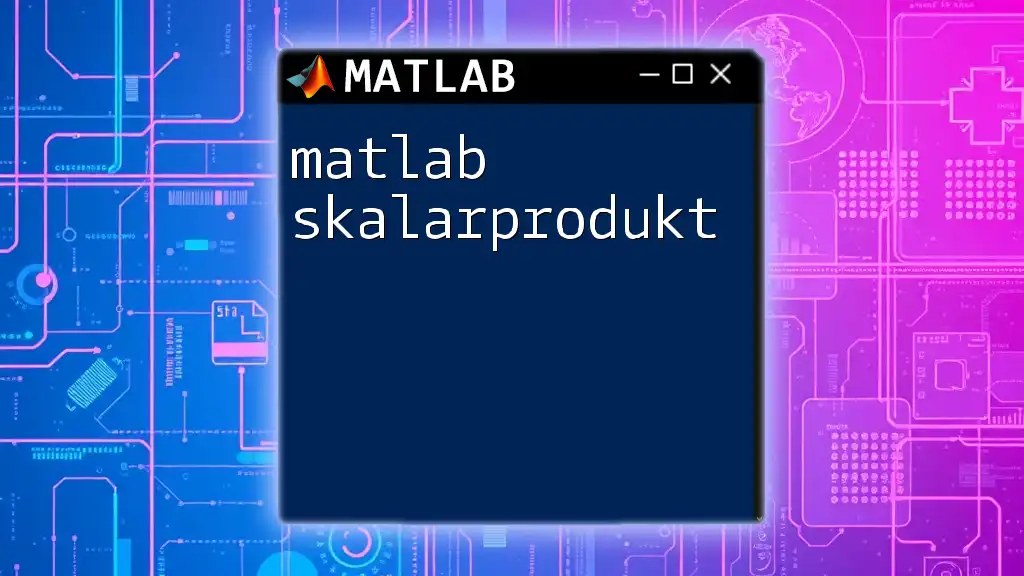
FAQs
-
What if A is not square?
If `A` is not square, the backslash operator can still determine a solution as long as there are enough equations to provide meaning. In cases where the system is either overdetermined or underdetermined, MATLAB will utilize optimization techniques accordingly. -
How does the backslash operator handle singular matrices?
When `A` is singular, MATLAB issues a warning and may return a least squares solution, aiming to minimize residual errors instead of providing an exact solution. -
Can the backslash operator be used with symbolic variables?
The backslash operator can be used in symbolic computations; however, it may require careful implementation and understanding of symbolic algebra in MATLAB.

